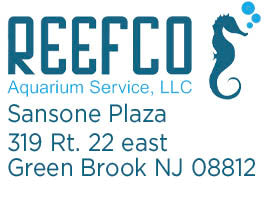A Complete Guide To Fragging Corals
Fragging corals is an extremely rewarding process within the hobby. Fragging corals also means less money spent on buying new coral frags and a lower chance of diseases and pests entering your aquarium!
But before we dive into the million-dollar question, you need to know how corals naturally replicate in the wild. To put it short, corals have the unique ability to clone themselves into a separate coral frag. Over time this new frag grows into a fully-functioning coral, that one day will clone itself, repeating the process over again.
Now, fragging in aquariums is a special technique, similar to taking plant trimmings and replanting them elsewhere in your backyard. Fragging involves cutting, snapping, or slicing your corals and then mounting them onto a new piece of rock or frag plug.
The methods of fragging are simple, read on to find out more!
Fragging Process
Three main stages are commonly used for fragging.
#1: Planning
First, check the health of the coral you want to frag. This means, checking over a couple of months at the desired corals' growth rate. Only once your aquarium meets your desired coral’s nutritional and environmental requirements, you can start cutting away!
#2: Fragmentation
But wait, before cutting your coral, prepare your cutting tools and mark the area where you want to cut them.
To cut your coral you can cut, snap or break the coral, depending on which type of coral you have.
Fragging Equipment List
Before slicing up your coral, you need to make sure you gather the correct fragging tools:
- Piece of live rock rubble or a frag plug
- One small bowl/container
- One rubber band
- Reef-safe glue
- Mesh
Cutting Tools:
- Razor blade (soft corals)
- Scalpel (soft corals)
- Stainless steel scissors (soft corals)
- Wire cutters (good for thin branching stony corals)
- Bone cutters (good for branching stony corals)
- A band saw (encrusting corals)
#3: Attachment
Once you have successfully cut your coral frag, you want to attach it to a suitable location inside your aquarium.
- Attaching Soft Corals: Soft corals easily attach to rock as they grow, so you just need to secure the coral for long enough for it to attach. You can use rubber bands or reef glue.
- Attaching Stony Corals: Stony corals are best secured with superglue or reef-safe glue. Larger stony corals like Euphyllia corals (Hammer Corals, Torch Corals, and Frogspawn) often need an epoxy foundation before being attached to the rock. Smaller stony corals like Montipora and Acropora Corals can be directly glued to rocks or a frag plug.
- Attaching Encrusting Corals: Encrusting corals are tricky to mount. It is easier to glue the entire mount to your aquarium rocks and allow them to encrust over the surrounding rock.
A Step-By-Step Guide To Fragging Corals

- The first thing to do is select which coral you are going to frag and gently take it out of the aquarium. In some circumstances, corals may need to be fragged inside the aquarium, but if not, we always recommend you remove them from the aquarium.
- Once your coral is out of the aquarium, place it in a clean, small container.
- Next, is the cutting process. For this, you will need a razor blade or another cutting tool. Whichever cutting tool you use, make sure it is clean and sharp.
- When cutting the coral polyp, we advise cutting the coral horizontally and removing the whole cap. This means that the bottom part of the coral will remain attached to the rock, where it can grow back.
- With the newly cut coral frag inside the small container, fill the container with aquarium water. Do not worry if you see string-like material oozing from the coral. This is a natural process that corals do during the fragging process to protect themselves.
- Once the coral frag has been in the water for a short time, take it out of the water and dump the water. Gently wrap the rock with the mesh and place the coral frag onto the rock. With the rubber band, carefully wrap it around the coral frag and rock to hold it in place.
- Lastly, decide where you want to place your new coral frag inside your aquarium. Remember that new frags should be placed away from areas with strong water flow to prevent them from detaching. Don’t forget to also place the mother coral back in its original placement.
- As soon as the new frag grows into a fully-fledged coral and has fully connected to the rock, you can carefully remove the mesh and glue the rock to its final destination inside the aquarium.
- Congratulations! You are done fragging your first coral!
Fragging Corals: Aftercare
We always recommend treating your coral with Frag Recover, to prevent infections and disease outbreaks.
Depending on the type of coral, water quality, and aquarium lighting and flow conditions, you should start to see your new coral frag grow within a few weeks.
Monitor your new coral frag, ensuring that no tank mates are attacking it at its most vulnerable growth spurt!
Summary
Fragging is a fantastic way to increase the number of coral colonies inside your aquarium. Plus, it saves you money on buying new coral frags online or at your local fish store.
With a few basic tools and some simple steps, fragging corals is an easy process. If you have any questions regarding fragging corals, or what epic corals we have to offer, do not hesitate to contact the Reefco team.



